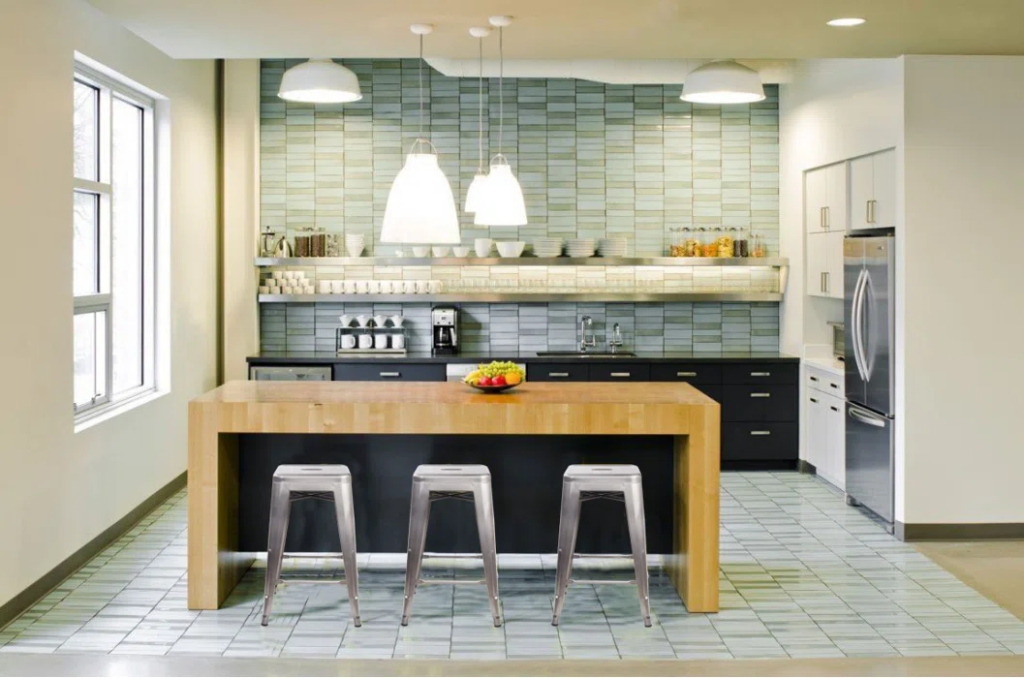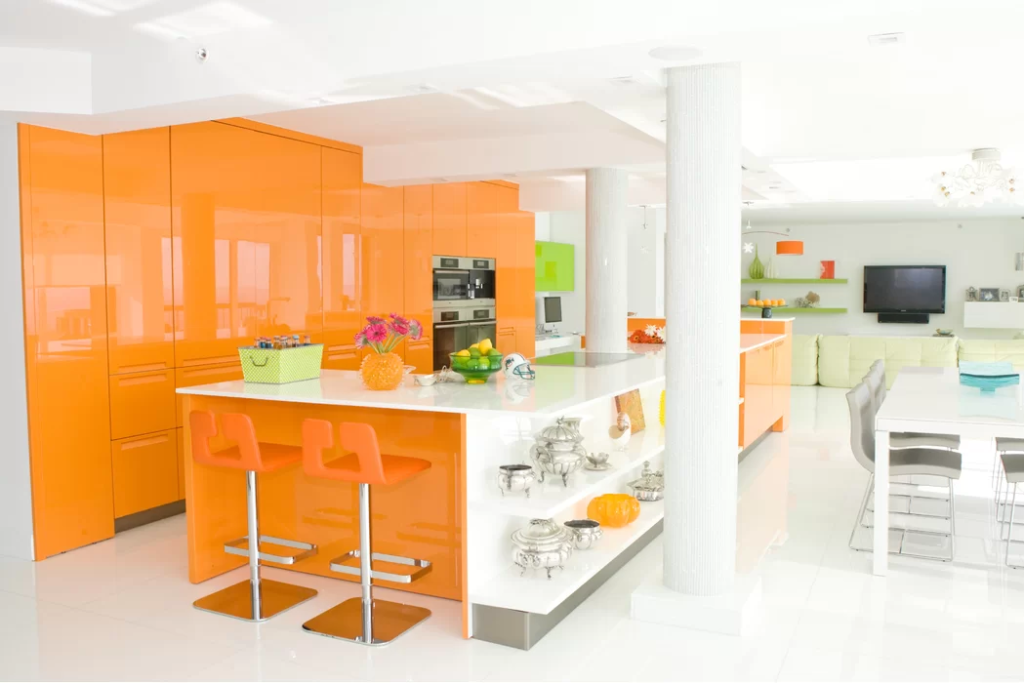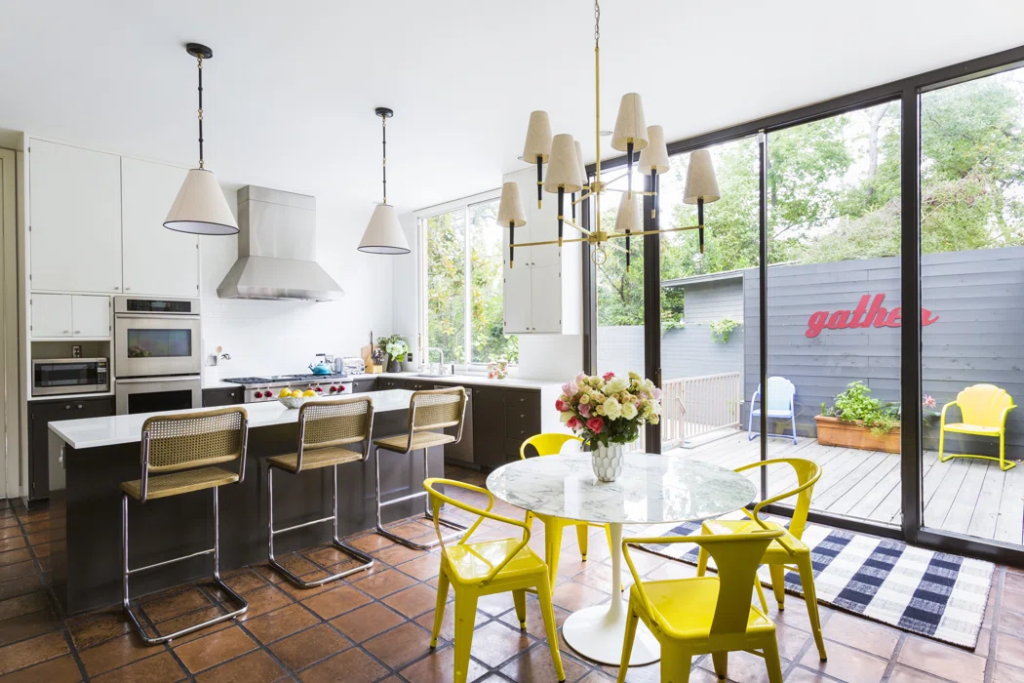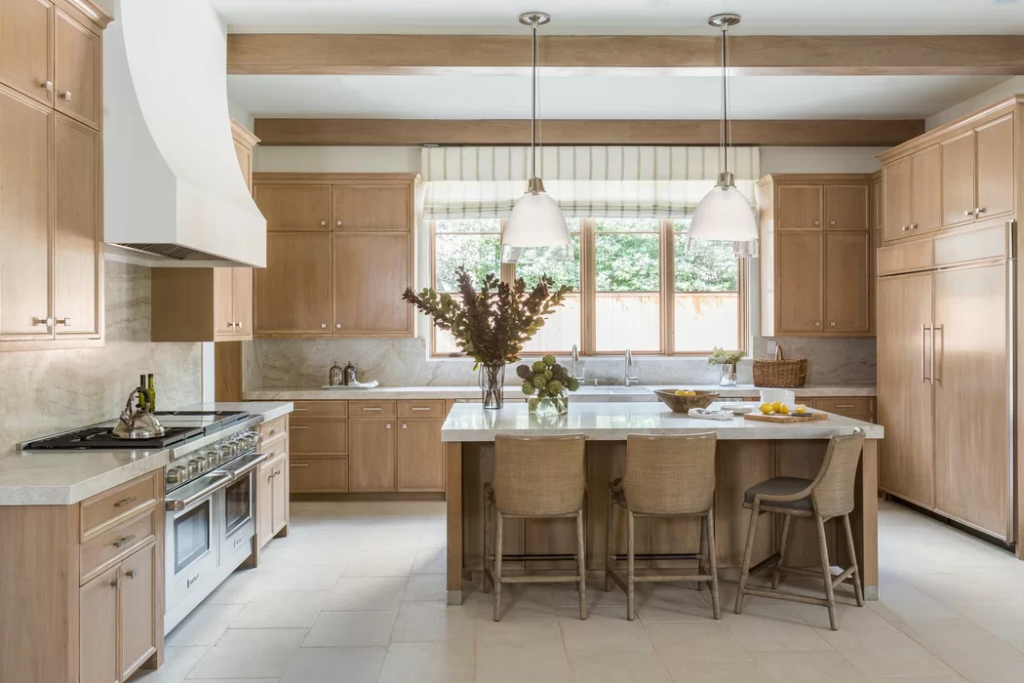8 Kitchen Flooring Ideas to Consider for Your Next Remodel Project
One of the most complicated remodeling projects at home is building the entirety of the kitchen. Compared to the other spaces of the house, a kitchen is in need of combined living, electrical, and plumbing requirements. In remodeling a kitchen, choosing the practical flooring material may seem to be a challenge as choosing the color palette for the walls and arrangements for the cabinets. As the largest plane on the room, selecting the right material should be given time and research. With that in mind, we have gathered 8 kitchen flooring ideas to consider for your next remodel project.
1. Laminate Flooring


Laminate flooring is often a common material used for kitchen floors but draws a gray area to the space. It has been an ongoing argument between having laminate floors as better coverings than it does harm the bare area taking into consideration heat and moisture. The best way to work with one is to install and seal them properly throughout to prevent soaking the bottom part in water. Water will not peep through the core of the laminates when baseboards are enough to cover the perimeter.
Advantages:
- Its aesthetic visual impact is similar to other expensive flooring materials.
- It is perfect for those working with a DIY remodel.
- Some types are waterproof when the seams are put together properly.
Disadvantages:
- Durability is lower than the other flooring materials.
- Not all types of laminate flooring are proven to be waterproof.
2. Linoleum Flooring


Linoleum flooring is like a roll of paper layered on the bare kitchen floor. The right type of natural materials such as limestone, linseed oil, wood floor, and resin, can make the kitchen a solidified floor ideal for heavy-traffic spaces and wet areas. It is a rather inexpensive choice for the kitchen floors and having the idea of getting the design that you want. It can be bought in rolls or even tiles at a hardware store. In spite of newer and more advanced flooring materials, linoleum remains to be one of the popular materials considering how renewable and natural it is.
Advantages:
- Sustainable material for the kitchen floors.
- Cleaning and maintenance are easier.
- Installation and taking them down would not require a professional.
- They come in a variety of designs and colors to choose from.
Disadvantages:
- The sheets are easily dented and scratched. Thus, the need for replacement more often than other expensive materials.
- Over time, the color and quality fade and do not sustain considering environmental factors.
- Waxing the linoleum floors can make them slippery jeopardizing the safety in a busy and high-traffic area at home.
3. Concrete Flooring


Concrete is not the first thing you will have in mind in building the kitchen floors. As much as it is a great material for the foundation of the house, it is also a durable alternative to other flooring materials. We love how customizable it can be in making it look like stone, tile, and even food. Having them sealed properly works as a concealer in making them waterproof. We still suggest having textiles on the floor for additional support in absorbing excessive moisture. It is a cheaper flooring option that works well with modern design styles.
Advantages:
- It is a perfect material to opt for for those with a tight budget.
- Durability is not compromised even in high-traffic areas.
- The design is highly customizable depending on your personal preferences.
Disadvantages:
- The flooring material is too cold, especially during the winter season.
- It can be slippery when exposed to moisture or fluids.
- The material can be too hard to walk on.
4. Porcelain Tile Flooring


Porcelain is a stronger classification of a ceramic tile built with a harder, more durable, and water-resistant than the regular types of ceramics. They are built with more pounded particles and exposed to a higher temperature allowing the material to be more durable than the others. It tends to be heavier than any other flooring material and is often not a great insulating material during the cold seasons of the year. We love how they can mimic the design of other materials but at a relatively cheaper cost.
Advantages:
- There is a variety of designs to choose from which makes it a flexible and practical option for the kitchen floors.
- Its durability can work long-term making it fewer chances of replacement and maintenance.
- Highly resistant to water and stains.
Disadvantages:
- Not ideal if you are on a tight budget since it requires to be installed by a professional.
- Its heavy composition will make it difficult to be installed.
- The grout will require a high-quality sealant to be used over time.
5. Ceramic Tile Flooring


Ceramic tile is an established flooring material that works flexibly in any space at home. It is often used in spaces that are exposed to heat and moisture. This includes kitchens and bathrooms. But, its versatility and design work well in other high-traffic areas of the house. There is nothing wrong with using tiles, regardless of the climate. It is known to be a durable and elegant flooring that will surely make the kitchen feel like home.
Advantages:
- The material is sustainable to water and stains. Good quality ceramic tiles do not wear out easily.
- It is a non-allergenic material perfect for those with sensitivity to other construction materials that can compromise one’s health.
- There is a variety of designs to choose from to satisfy any design style preferred for the kitchen space.
- Ceramic tiles are budget-friendly as compared to the other flooring types. It is ideal to those who are working on the remodel but on a tight budget.
Disadvantages:
- It is cold during the winter season.
- It can be challenging to install. For best results, we highly suggest hiring a professional for a leveled surface. This is not ideal for beginners in the field of DIY.
- The surface is hard to walk onto.
6. Stone Tile Flooring


Living in the 21st century means newer technology for building materials. Stone tiles are one of the common traditional flooring materials symbolizing abundance, power, and wealth. During the earlier times, it was the most expensive and establishes the status of a household. These days, it still does but it is no longer a social status. It is more accessible and affordable now considering the production and distribution methods these days. We love how its composition varies considering how different types of natural stone vary in the way they are shaped and quarried.
Advantages:
- Its design improves the aesthetic impact of the kitchen.
- They come with unique designs and patterns.
- The flaws of the material can be easily worked with a sealant.
- Increases the sale value of a house even after a long time.
Disadvantages:
- This is an ideal flooring option if you have the budget considering that it comes with a relatively high price.
- Just like ceramic and porcelain, they are cold during the winter season. It requires a heater to make it bearable during the cold season.
- They easily break. Transportation of materials should be sealed to prevent them from unwanted and expensive breakages.
- It is not a sustainable choice considering how it was rooted in its raw materials from the environment.
7. Vinyl Flooring


In busy households, vinyl flooring is one of the popular choices for households. As much as it is used at home, being used in the kitchen is not a popular option. They consider it as a perfect material considering how they make the surface 100% waterproof. It is a synthetic material used for floorings often made from PVC, plastic, and even fiberglass. No matter how big or small an area to cover is, there is an ideal size to assemble the floor with. Whether it be tiles, planks, or sheets, assembly is made easier and more convenient. In addition, we love how it can mimic different materials such as wood, stone, and even porcelain.
Advantages:
- Vinyl is a resilient material that is durable, low-maintenance, and water-resistant ideal for the kitchen floors.
- Compared to the other flooring materials, vinyl comes with a softer feet touch. It helps in maintaining the temperature of the floors. Nothing too cold or too warm. It makes it perfect for whatever season.
- It is a budget-friendly option that can be installed all by yourself. It is easier to install and detach from the surface.
Disadvantages:
- The material does not increase the resale value of the house compared to the other expensive and high-quality materials.
- In cases when a portion is teared up, to maintain the aesthetic value, partial replacement is not an option.
8. Wood Flooring


To tap both aesthetic and cozy vibe for a kitchen, wood flooring is known to be the most popular flooring material. It works for both traditional and modern kitchen design styles. As much as we love how it looks and its saturated color, it is the material with the highest susceptibility to water damage. If you prefer wood flooring for the kitchen, we highly suggest opting for a pre-engineered one. They may come with additional costs but they work long-term and without compromised durability.
Advantages:
- There is no doubt about how wood makes the kitchen look elegant and luxurious. It makes the space more cohesive with the other furniture built with wood.
- Wood is a durable material that is easier to refinish in cases of wearing and tearing.
- The warmth and softness of the material are comfortable for the feet to walk on to.
Disadvantages:
- Wood is not water-resistant. Longer exposure to moisture can cause the flooring to split, swell, and soften.
- It requires regular maintenance and cleaning considering the softness of the material.
